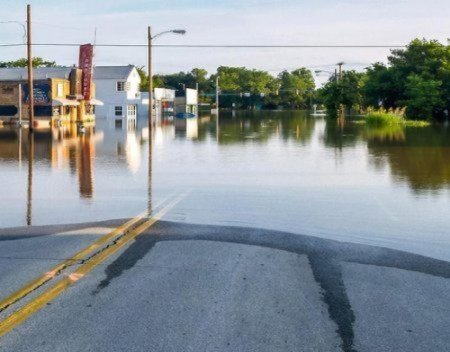
Simple Flood Insurance Tips You Should Know
Flood insurance for vehicles typically falls under the comprehensive coverage of an auto insurance policy.
Comprehensive coverage protects against damage not caused by a collision, including natural disasters like floods.
Here’s a detailed look at how it works:
Comprehensive Coverage Definition: This is optional auto insurance coverage that protects your vehicle against non-collision-related damage.
Coverage for Floods: If your vehicle is damaged by flooding, comprehensive coverage will typically pay for repairs or replacement, up to the actual cash value of the car.
Deductible: This is the amount you must pay out of pocket before your insurance covers the remaining costs.
Deductibles vary based on your policy.
How to Get Comprehensive Coverage Policy Addition: If you don't already have it, you can add comprehensive coverage to your existing auto insurance policy.
Cost: The cost varies based on factors like the value of your vehicle, your location, driving history, and the chosen deductible.
Claims Process Document Damage: Take photos and videos of the flood damage.
Contact Insurer: Notify your insurance company as soon as possible to start the claims process.
Assessment: An adjuster will assess the damage and determine the payout based on the policy terms.
Considerations Geographic Risk: If you live in an area prone to flooding, comprehensive coverage is particularly important.
Rental Car Coverage: Check if your policy provides for a rental car while your vehicle is being repaired.
Exclusions: Review your policy for any exclusions or limitations related to flood damage.
Tips for Protecting Your Vehicle Parking: Avoid parking in low-lying areas or flood-prone zones.
Weather Alerts: Pay attention to weather forecasts and take precautions if heavy rain or flooding is predicted.
Preparation: Move your vehicle to higher ground if there’s a flood warning.
By having comprehensive coverage, you can ensure that your vehicle is protected against the financial impact of flood damage.
If you are unsure whether your current policy includes this coverage, it’s a good idea to contact your insurance provider for clarification and consider updating your policy if necessary.
I have known Tim for many years and he is a man with great integrity, work ethic and one of the nicest persons I know. Over the years Tim has provided insurance counseling and advice to our company, for myself personally, as well as to our clients. Recently Tim, took time to analyze our flood insurance policy and he was able to make some excellent recommendations. Our flood insurance costs are now less and we have much better coverage. I recommend Tim to anyone without hesitation or reservation.
We contacted Mr. Holt for an estimate via email over the weekend prior to a closing on a property, hoping for a response on the following Monday to take with us with confidence in being insured at the settlement table on a Tuesday. He exceeded our expectations not once but in readily responding to the initial request and then to follow-up questions all during the weekend frenzy that occurs before closing. "Impressive and responsive customer service," for sure!
I have no problem giving you an A1 reference for taking care of the flood policies for me and Diane. I appreciate you working with the mortgage company: the surveyor and our previous agent. The result was a 75% reduction in our flood insurance premiums!